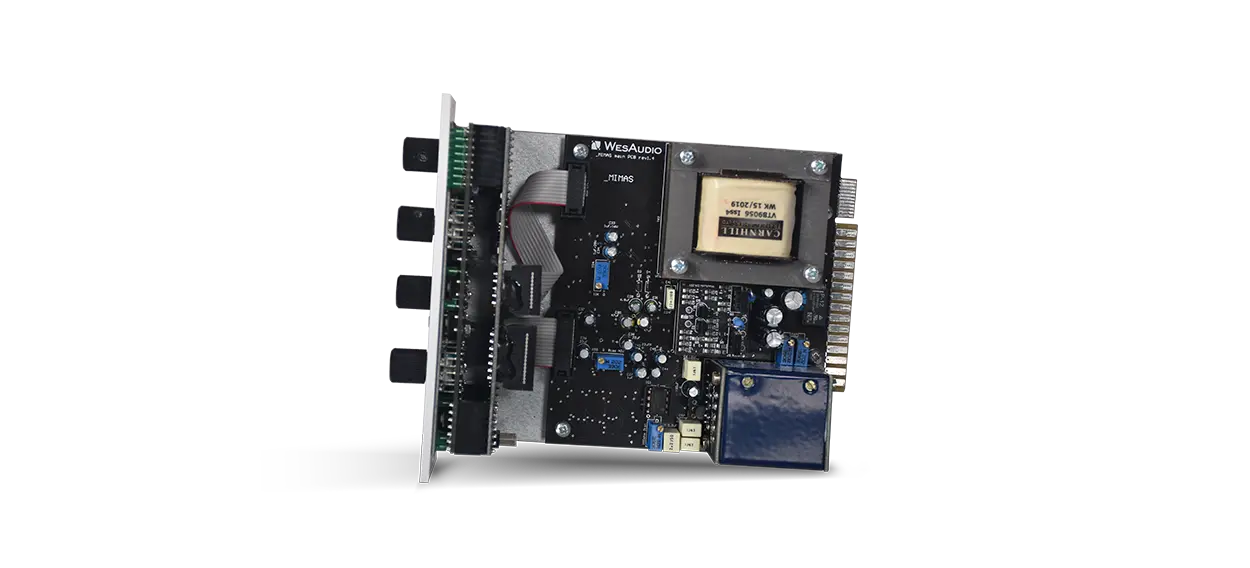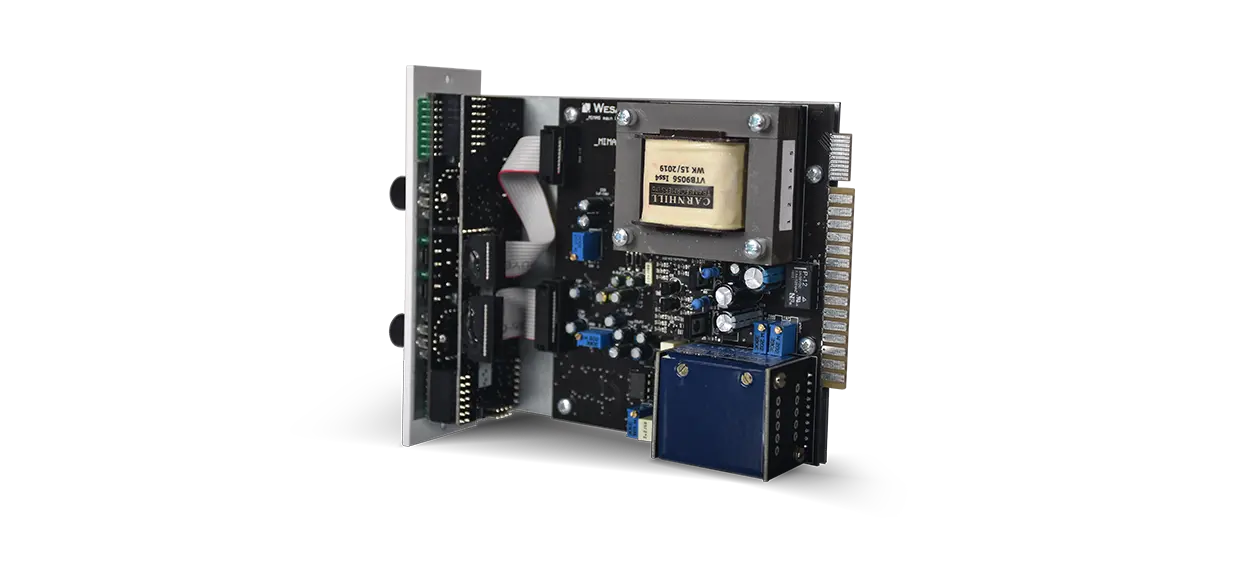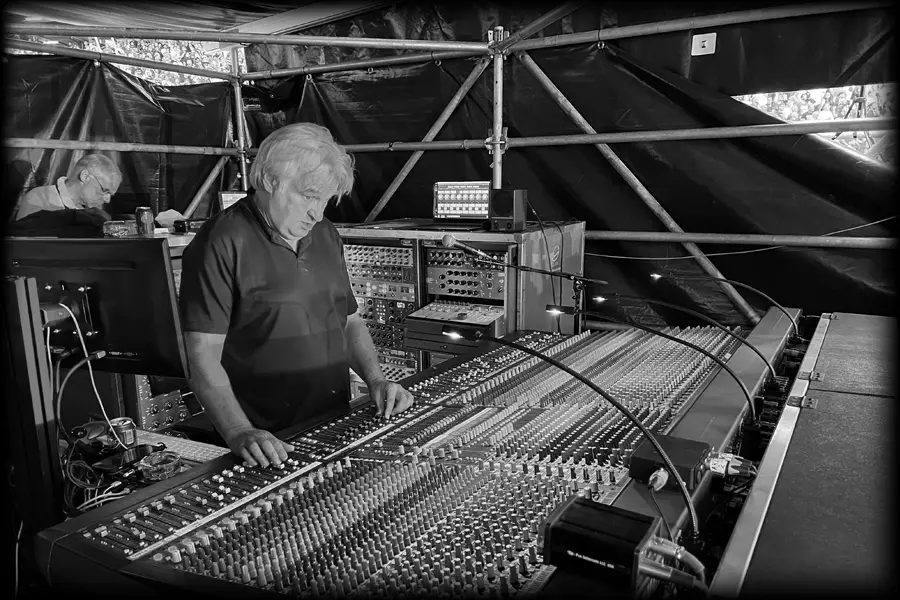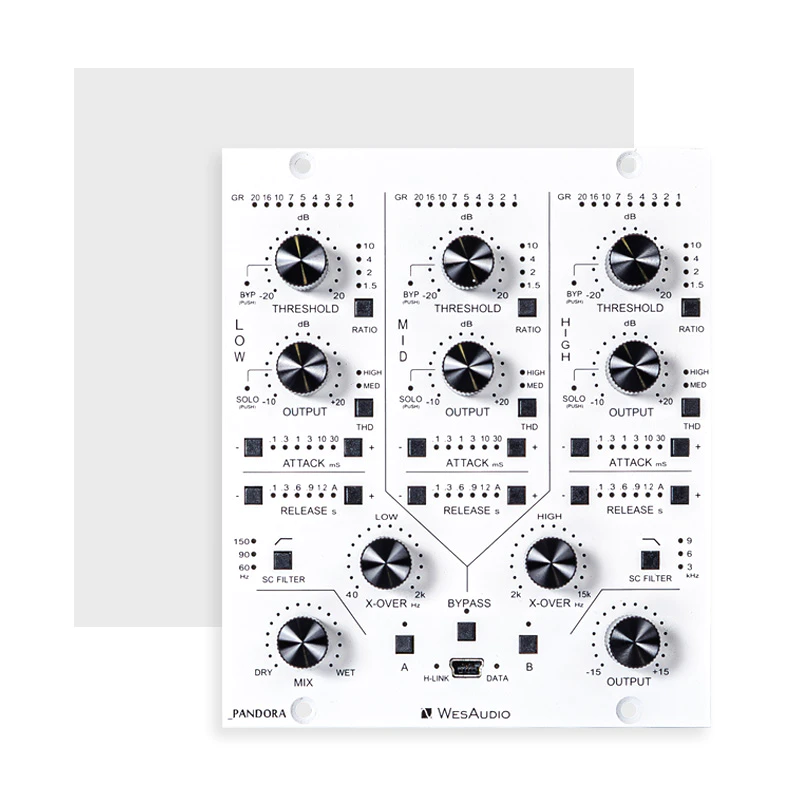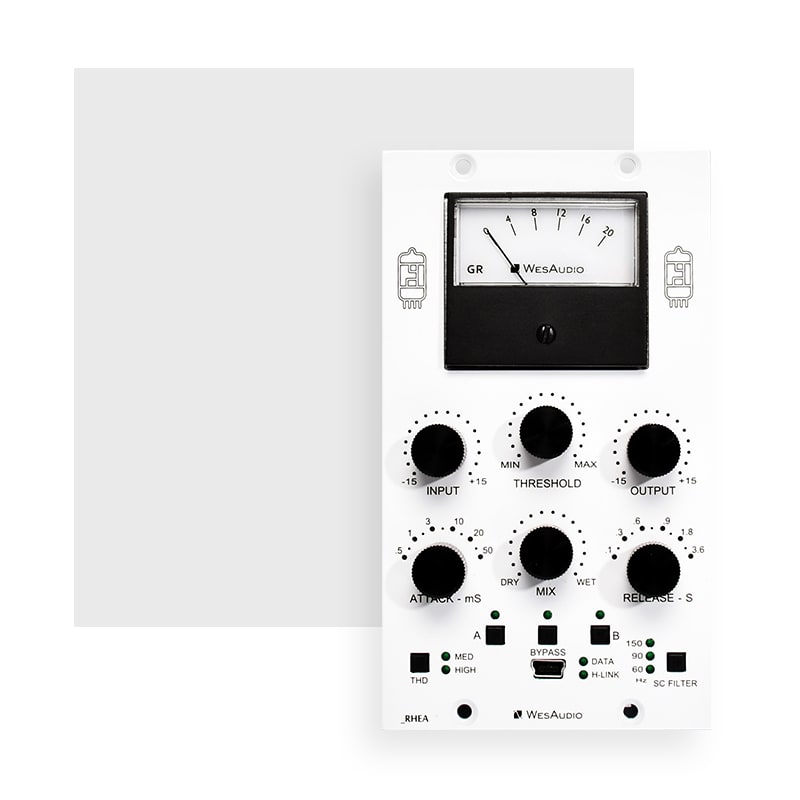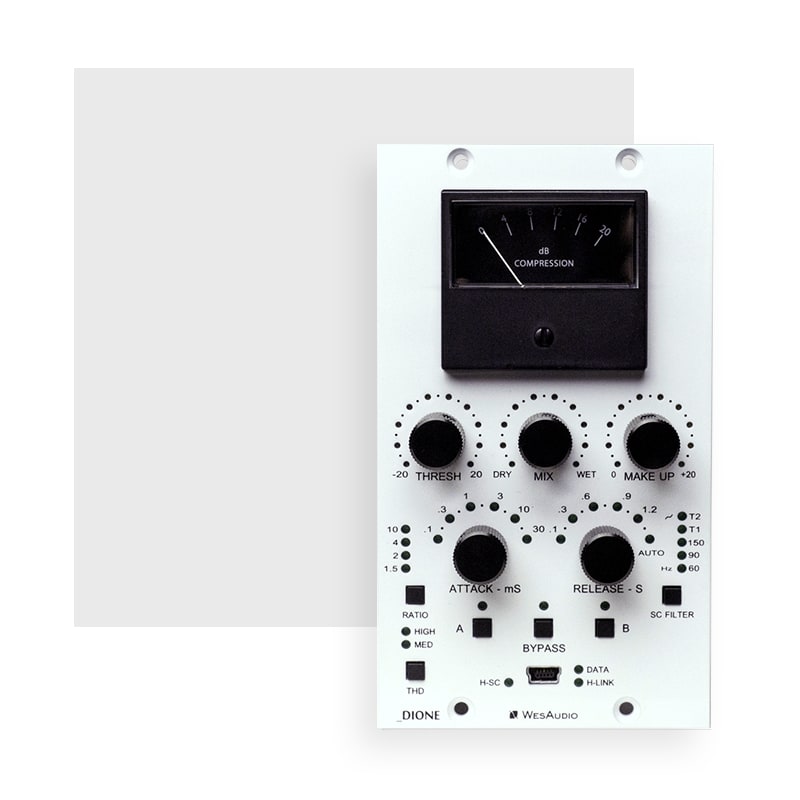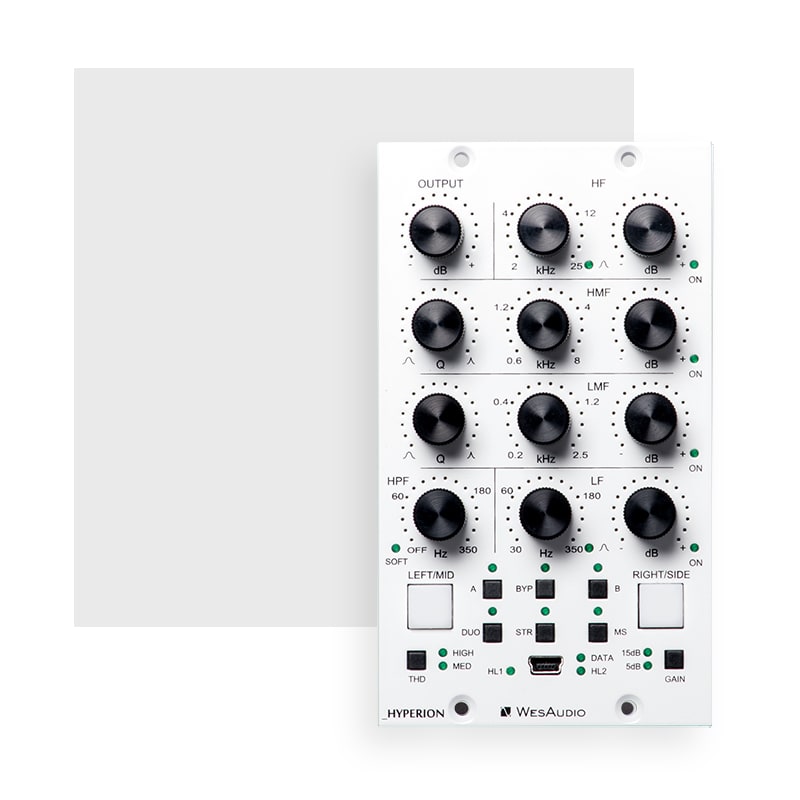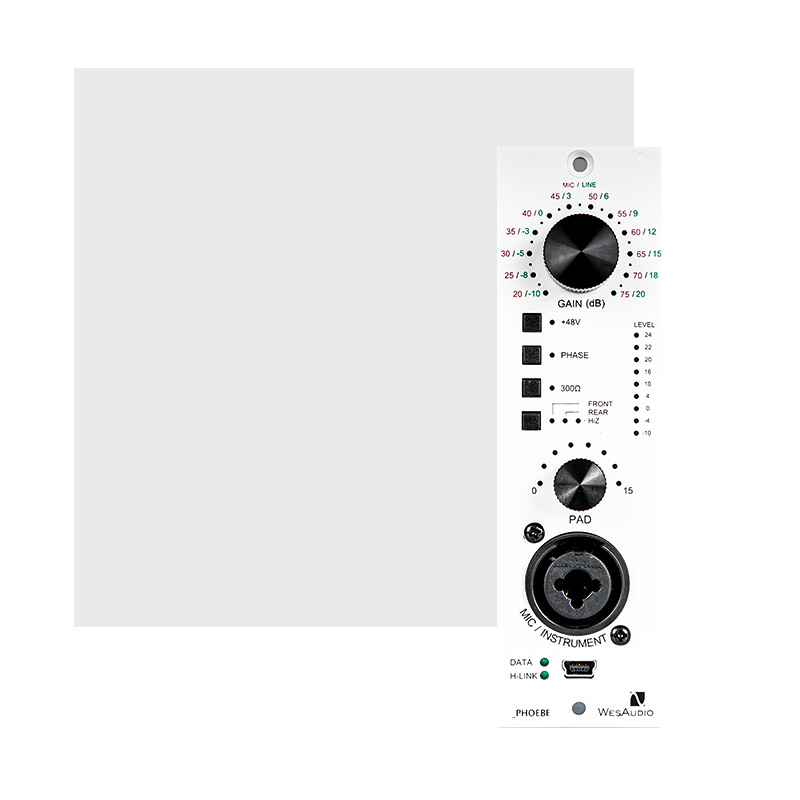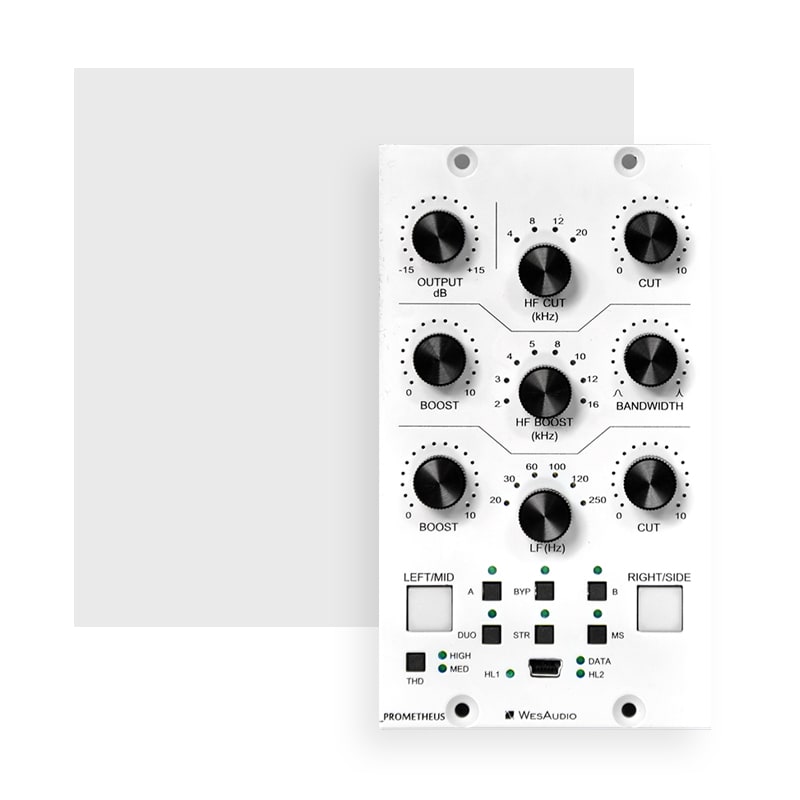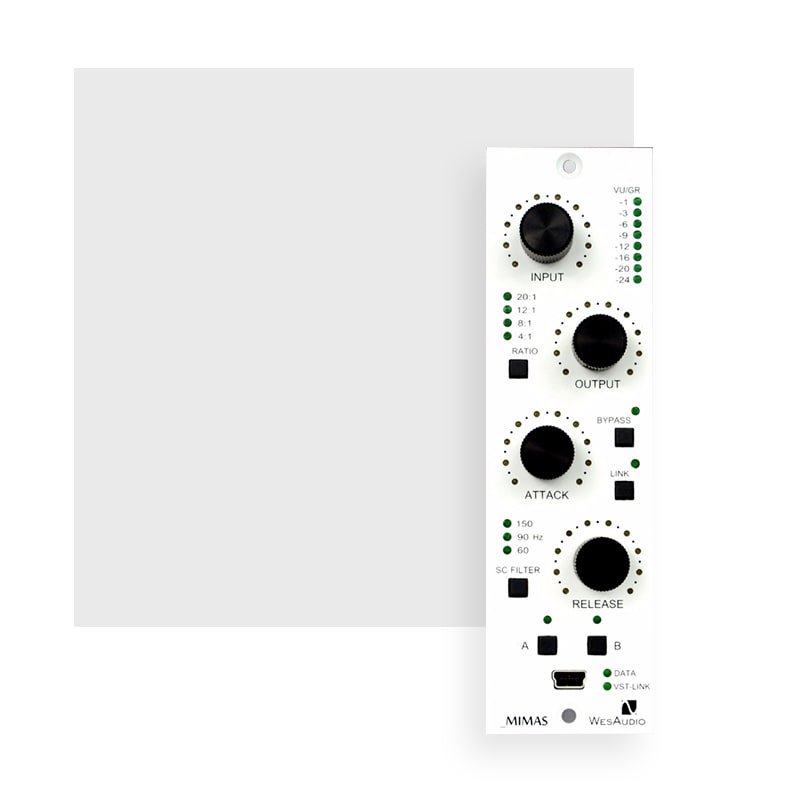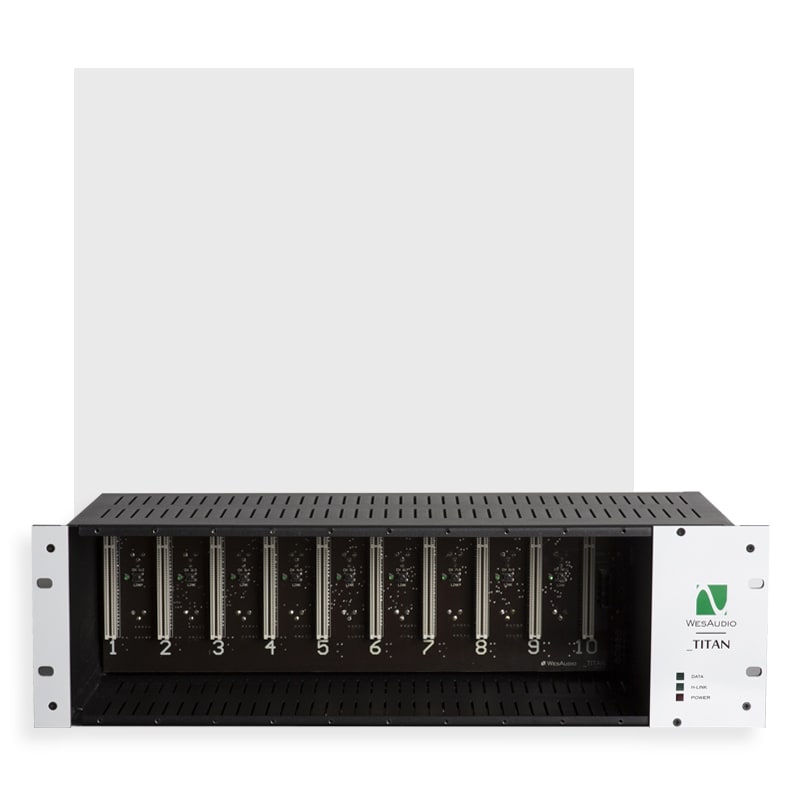_Mimas
New implementation
of a Legend
1176 – style analog compressor with digital recall
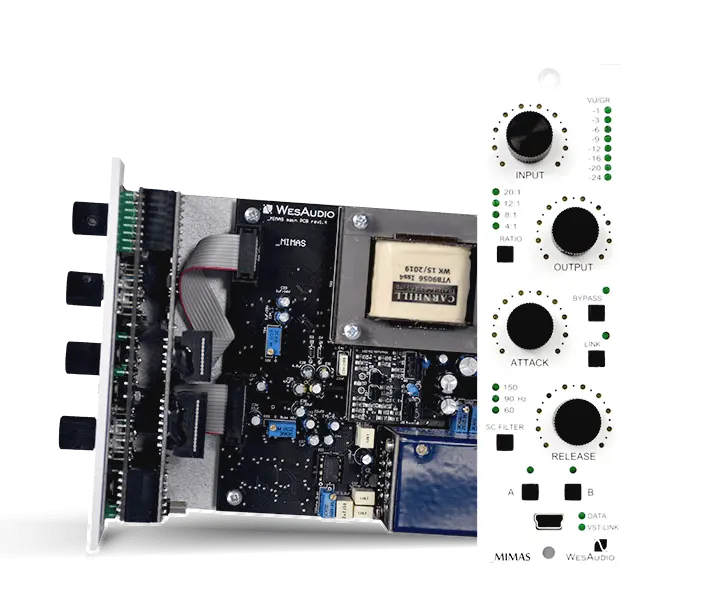
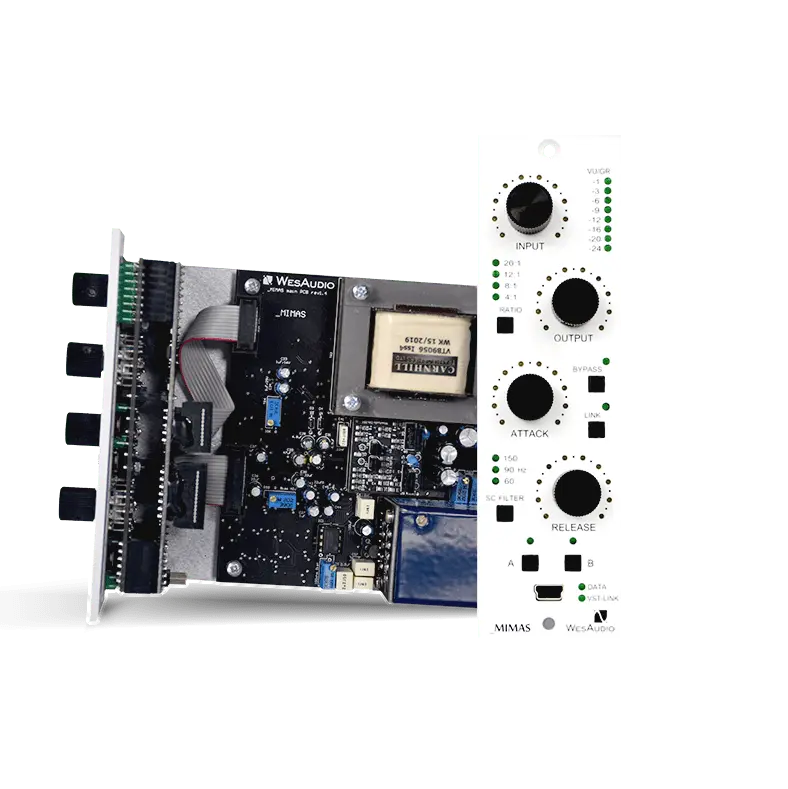
_Mimas
1176-style analog compressor with digital recall
Since 1968, FET-style compression has been a dominant force in countless recordings, remaining one of the most popular processing techniques to this day. Known for its lightning-fast attack and release times, it has become an essential tool for audio engineers. Wes Audio proudly introduces _MIMAS — an ng500 series processor that incorporates the legendary FET design, now enhanced with the highly sought-after feature of digital recall.
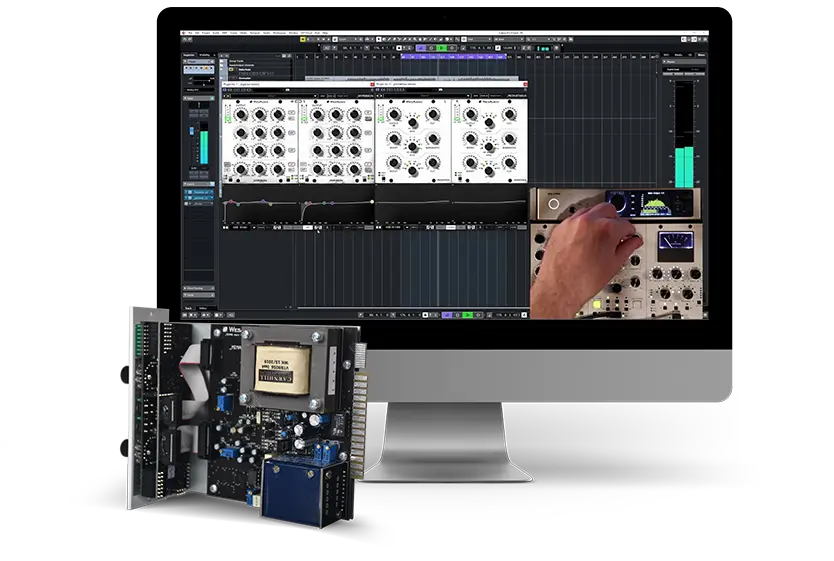
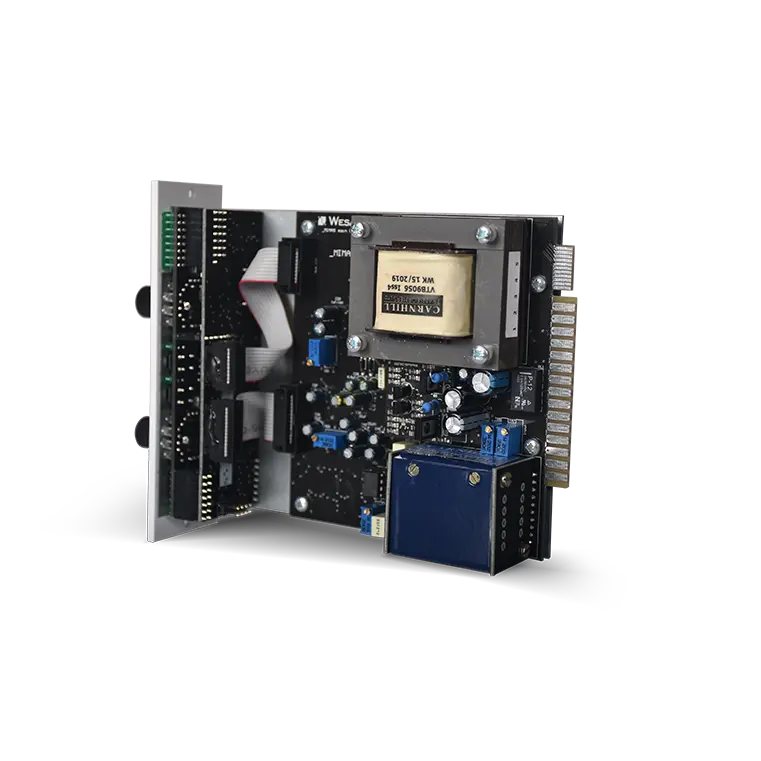
Main Features
_MIMAS: A Modern Take on a Legendary Compressor.
ANALOG SOUND, DIGITAL CONTROL
Same legendary fet compression
_MIMAS – Powered by Carnhill Transformers at the Core of Its Sound.
The most important feature of _MIMAS is its fully balanced analog design (IN/OUT) with +24dBu of headroom. Despite offering digital control, the signal path remains entirely analog, delivering the authentic FET compression sound that professionals expect.
Four Ratio Settings and Legendary “All Buttons In”.
Saturation Mode: One Knob to Add Color and Character Without Compression
Classic 1176 compressors allow users to disable compression while still adding warmth and character to the signal. _MIMAS follows this tradition but takes it a step further by using a single knob to control the amount of saturation applied to the signal, making it easier to achieve the desired effect without needing to adjust both the input and output knobs.
500 Series and ng500 Series Compatible
Regardless of its additional features, _MIMAS remains fully compatible with the 500 series standard(*). Digital functionality can be activated via the front panel mini USB socket.
The ng500 — Next Generation 500 series – is a physical extension of the standard 500 series, making _MIMAS fully compatible with the _TITAN frame, allowing control of all devices in the chassis through a single USB or Ethernet cable.
(*)Important note about 500 series extension: See note
Hardware A/B
Even when using _MIMAS as a purely analog signal processor, you can effortlessly switch between two parallel settings with the simple press of a button, offering quick and seamless control.
Total Recall and Plugin Control
Analog Automation
We’ve all wanted to adjust device settings based on different song sections, and now it’s easier than ever! Simply draw automation lines in your DAW, and your analog device will follow seamlessly.
Plus, you can use the four touch-sensitive encoders to record automation directly into your DAW, ensuring precise control over your device settings.
Main Features Summary:
Other Features:
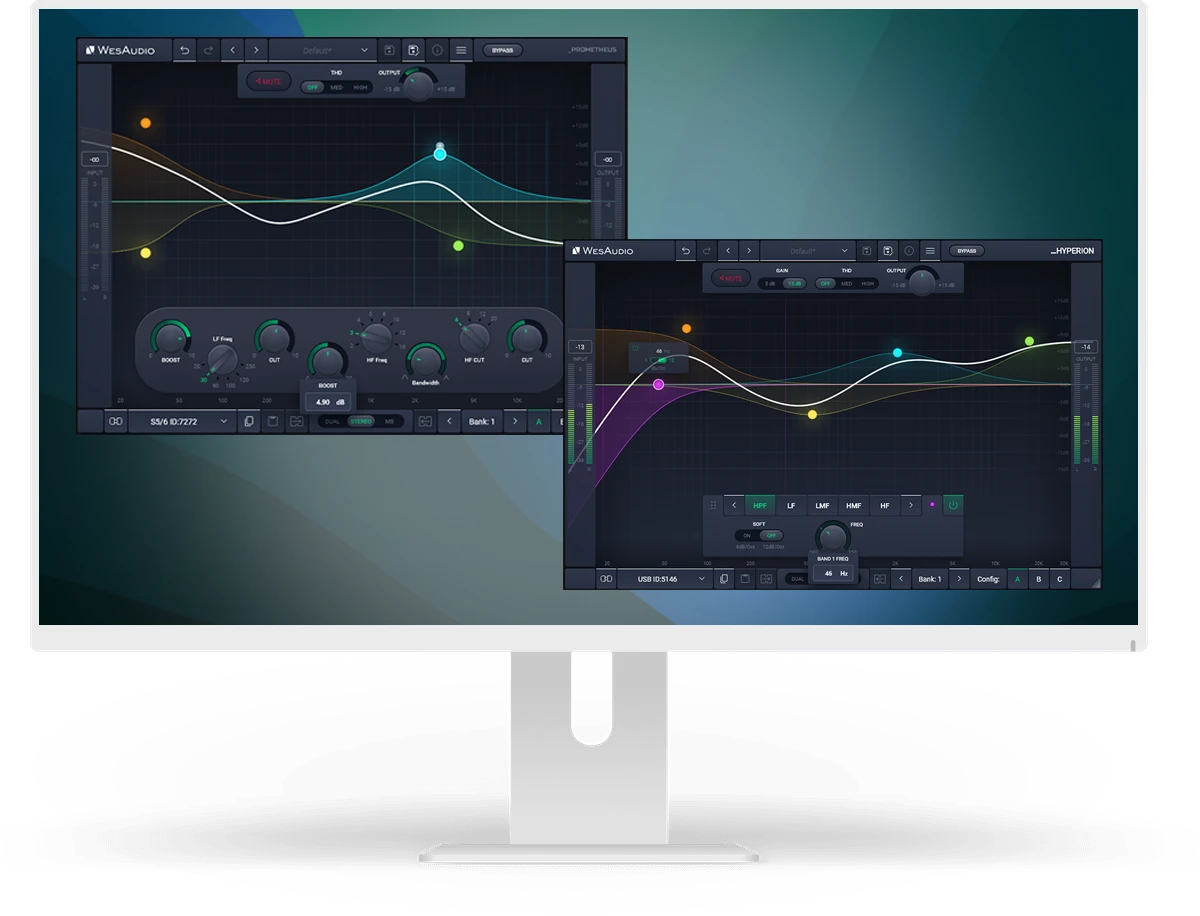
APP FOR MAC AND PC
Digital control features for fully analog units.
Specification
_Mimas specification
| Attack time | 20us – 800us |
| Release time | 50ms – 1100ms |
| Compression ratio | 4:1; 8:1; 12:1; 20:1; all button mode True Bypass |
| SC High Pass filter | 60,90,150Hz |
| Output impedance | 600ohm |
| Frequency response | 20Hz – 20kHz (+/- 1dB) |
| Signal to noise ratio SNR | >83dB |
| Power consumption | 3W (100mA/+16V, 60mA/-16V) |
| Unit dimensions | 38x133x145 mm |
| Box dimensions | 105x162x234 mm |
| Unit weight | 0,95 kg |
| Box weight | 1,2 kg |
| Warranty | 2 years |
User Manual
Download _Mimas User Manual
_MIMAS SAMPLES
To download high resolution files please use this link
_MIMAS VIDEO STORIES
Watch the product video
FAQ
Frequently Asked Questions
_MIMAS meter needs calibration from time to time, this is really simple operation and it is described here: Mimas Support Page.
It could be that _MIMAS levels need calibration, plesae head to Mimas Support Page for more information.
There is no need to uninstall the WesAudio application before installing a new release. The update process will seamlessly overwrite the existing version.
To uninstall the WesAudio application, follow the steps below:
macOS:
- Navigate to the location where you downloaded the WesAudio installer.
- Open the
.dmgfile. - Hold ctrl key and right click “WesAudio Uninstall”.
- From context menu click open
- A warning message will appear, but this time the “Open” option will be available. Click it
- Follow the on-screen instructions to complete the uninstallation.
Windows:
There are two ways to uninstall the application:
Option 1:
-
Go to
C:\Program Files (x86)\WesAudio\uninstalland run the uninstaller.
Option 2:
-
Open System Settings → Apps → Installed Applications.
-
Search for WesAudio, then select and uninstall it.
After completing the process, the WesAudio application will be removed from your system.
To reinstall WesAudio software, follow these steps:
- Uninstall the current version from your computer. – For detailed instructions, refer to the FAQ section: “How to uninstall WesAudio software?”
- Download the latest version from the WesAudio website (if needed).
- Run the downloaded installer to complete the installation.
If the module doesn’t react to any changes to the knobs on the front panel, the first necessary step is to rewrite firmware into the flash memory (Factory reset procedure re-writes firmware into internal flash memory – it doesn’t affect anyhow unit configuration). To proceed with factory reset, please follow below steps:
- Connect unit either:
- Through front panel USB socket,
- Or keep the unit in ng500 chassis – _TITAN, but please note that chassis has to be connected to the PC/MAC either via USB or Ethernet cable.
- POWER OFF your 500 series chassis.
- Depends on the product please press following front panel control:
- _MIMAS – RATIO button,
- _DIONE – RATIO button,
- _RHEA – THD button,
- _PROMETHEUS – HIGH CUT encoder (top-right encoder),
- _HYPERION – LMF GAIN encoder,
- _CALYPSO – MENU encoder,
- _PANDORA – HIGH SC FILTER (right button).
- While keeping this control (button/encoder) pressed, POWER ON your 500 series chassis.
- LEDs should present a strange pattern.
- Now open GConManager:
- WIN: C:/Program Files (x86)/WesAudio/GConManager.exe
- MAC: /Applications/WesAudio/GConManager.app
- Or click on the WesAudio “Tray” icon, and select “Open GConManager”
- Go to _UPGRADE application.
- Hit start!
If the module doesn’t react to any changes to the knobs on the front panel, the first necessary step is to rewrite firmware into the flash memory (Factory reset procedure re-writes firmware into internal flash memory – it doesn’t affect anyhow unit configuration). To proceed with factory reset, please follow below steps:
- Connect the unit to either USB or Ethernet.
- POWER OFF your unit.
- Depends on the product please press following front panel control:
- ngBusComp – far left Ratio on Channel 1 (Ratio “-”),
- _TITAN – any LINK button between slot connectors,
- ngTubeEQ – THD encoder on Channel 1,
- ngTubeComp – Saturation encoder on Channel 1,
- ng76 – “IN MODE” button,
- ngLEVELER – use a small screwdriver and press button available on the rear panel via a small hole in the chassis.
- While keeping this control (button/encoder) pressed, POWER ON your unit.
- LEDs should present a strange pattern.
- Now open GConManager:
- WIN: C:/Program Files (x86)/WesAudio/GConManager.exe
- MAC: /Applications/WesAudio/GConManager.app
- Or click on the WesAudio “Tray” icon, and select “Open GConManager”
- Go to _UPGRADE application.
- Hit start!
This is a very common issue and in most cases the root cause lies in the connection of the unit and audio interface. If that happens it should be checked if audio interface input isn’t connected to the chassis input and if audio interface output isn’t connected to chassis output. As this initially would seem to be entirely wrong and shouldn’t work at all, as all our units implement “True Bypass” via relays, the unit will pass a signal when the bypass is engaged. The reason for that is that the relay is in fact hard wiring input to the output, and thus the unit will pass the signal, as it doesn’t go through any active circuit of the unit.
This is actually how it is supposed to work, so after the plug-in instance is created, please use a small triangle button which usually is on the bottom side of the plug-in and select proper HW ID from the drop down menu. If the drop down menu doesn’t list any hardware units, please check Your connectivity and other possible root causes in this FAQ.
This is a wide topic, and there may be at least several root causes, but there are few things that should be checked. However, the first and most important thing is to double check that GConManager doesn’t list this device in the _CONFIG app. If this is the case, it means that WesAudio unit can’t connect on the OS level, and some of the below steps may help:
- First of all double check if module connection is properly executed, this procedure is described here.
- USB specification indicates that USB 2.0 works up to 5 meters. This is however not entirely true, as it strongly depends on the peripherals that unit is connected to. Even if our modules are USB 2.0 compatible, your USB port could support USB 3.0 – USB is a backward compatible protocol, so it may be that USB 3.0 cable length limit should be considered which is 2 meters. We would recommend having a USB cable up to 2 meters to remove those limitations from the equation.
- USB HUB is very common root cause to those problems, if module can’t connect via HUB – just for the sake of the test, it is mandatory to connect unit directly to PC/MAC to verify if the problem isn’t caused by it.
- Please note any system warnings attached to “WesAudio Tray Icon”.
As USB controllers have limited capacity it could be a reason for random unit disconnection. Usually, it happens when a lot of USB devices are plugged into the PC/MAC. The usual behavior would be that the unit works normally, and after reboot it doesn’t, but it strongly depends on the OS implementation so exact reaction could be a little bit different. If this is suspected, just for the test, it would be good to disconnect most of the devices from the USB ports, reboot PC/MAC and double check the connectivity from stability point of view. If it leads to the conclusion that this is the root cause of the problem, we would recommend using a decent USB hub, and ideally a TB/USB dock station which tends to offload a lot of responsibilities from our PC/MAC.
If the unit was working fine, and suddenly it couldn’t connect (it is not visible in the GConManager _CONFIG app) that could lead to the conclusion that some devices were added to our USB line, and we could have problems with the USB controller inside PC/MAC. In that case please check the description in the above “Unit disconnects by itself”.
GConManager in Admin mode enables special functionalities which are used during WesAudio units calibration.
Starting from GCon 15, Admin mode can be activated through the GCon Manager app:
- Open the GCon Manager app.
- Navigate to Settings.
- Click the padlock icon to unlock the settings.
- Check the Admin Mode box to enable it.
Alternatively, Admin mode can be activated by following these instructions:
OSX:
- Please open terminal.
- Copy-Paste following command:
open /Applications/WesAudio/GConManager.app --args --admin
WINDOWS:
- Go to “START” and open “Command Line”.
- copy paste this command:
"c:\Program Files (x86)\WesAudio\GConManager.exe" --admin

